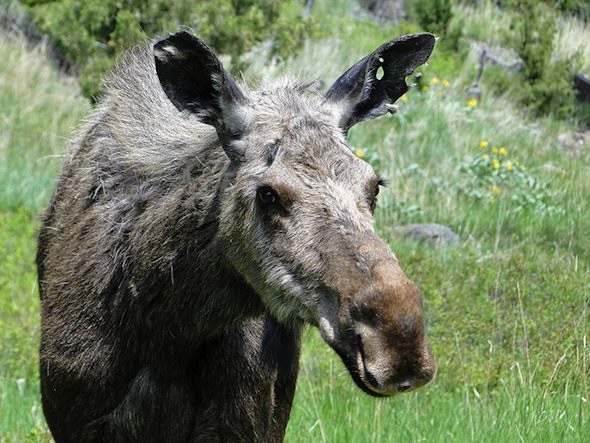Be Small, Stay Cool, Forget the Climate
Bigger species of wildlife appear to suffer more stress from climate change than their smaller counterparts, U.S. researchers have found.
By Tim Radford, Climate News NetworkThis piece first appeared at Climate News Network.
LONDON — When it comes to climate change, small could be beautiful. Christy McCain of the University of Colorado Boulder looked at more than 1,000 scientific studies of mammalian behaviour and responses to climate change in North America and came to one big conclusion: bigger animals are more likely to experience stress than the smaller ones. A tiny shrew in the American forests was 27 times less likely to respond to climate change than a moose not far away.
She settled on 140 scientific papers that contained population responses from 73 North American mammal species, and examined a number of observations that could be called a response. Was there some sort of local extinction? Did the creature’s range contract, did it shift, did the species numbers increase? Did seasonal behaviour betray any change? Was there any variation in body size? Or in genetic diversity?
She and her colleague Sarah King report in Global Change Biology that only about half of the mammals responded as expected to climate change; 7% did the opposite of what might be expected and the remaining 41% betrayed no response. Those characteristics that indicated a response to climate change were large body size and restricted times in the day when a mammal might be active.
Tailored conservation
Almost all the large mammals responded negatively to the gradual warming and seasonal shifts of recent decades. Mammals active only in the daylight, or only at night, were twice as likely to respond as mammals that had a more flexible approach to time-keeping.
Mammals in the high latitudes, or at high elevation ranges – polar bears in the first case, American pikas and shadow chipmunks in the second – were also more likely to be in some way affected than those further south or further downhill. Small mammals however seemed to be able to exploit a wider range of micro-climates – shady patches, burrows and so on – to shelter from the effects of climate change.
“Overall the study suggests our large charismatic fauna – animals like foxes, elk, reindeer and bighorn sheep – may be more at risk from climate change”, said Dr McCain. “If we can determine which mammals are responding to climate change and the ones that are at risk of disappearing, then we can tailor conservation efforts toward those individual species.”
Your support matters…Independent journalism is under threat and overshadowed by heavily funded mainstream media.
You can help level the playing field. Become a member.
Your tax-deductible contribution keeps us digging beneath the headlines to give you thought-provoking, investigative reporting and analysis that unearths what's really happening- without compromise.
Give today to support our courageous, independent journalists.






You need to be a supporter to comment.
There are currently no responses to this article.
Be the first to respond.